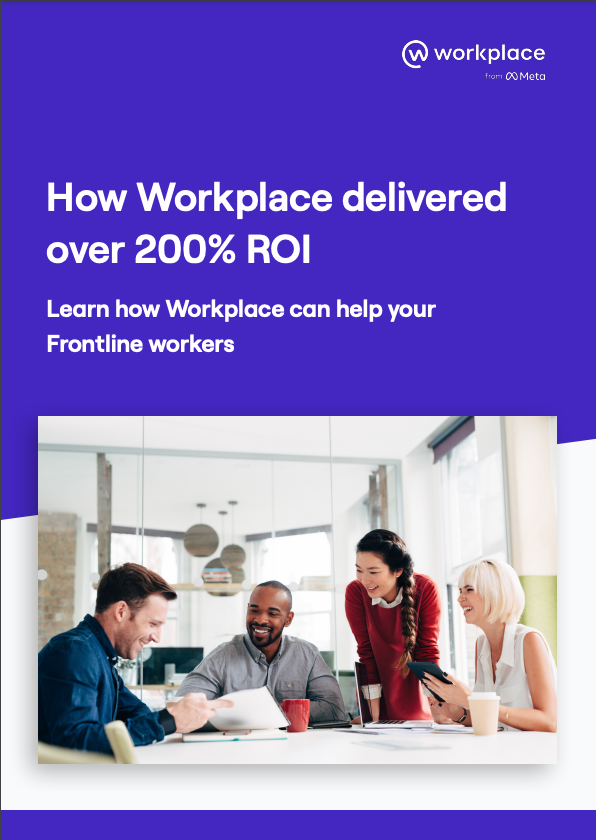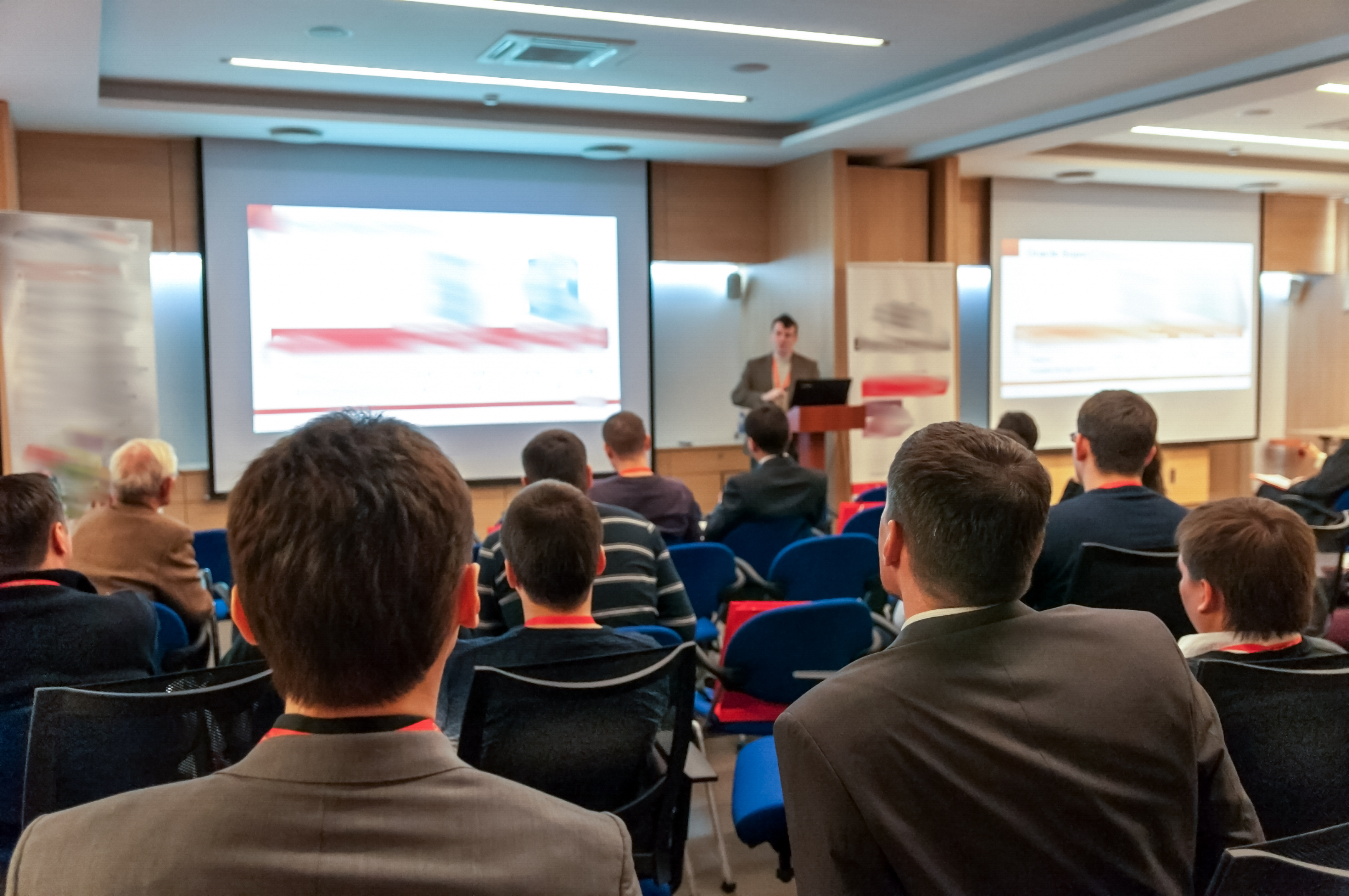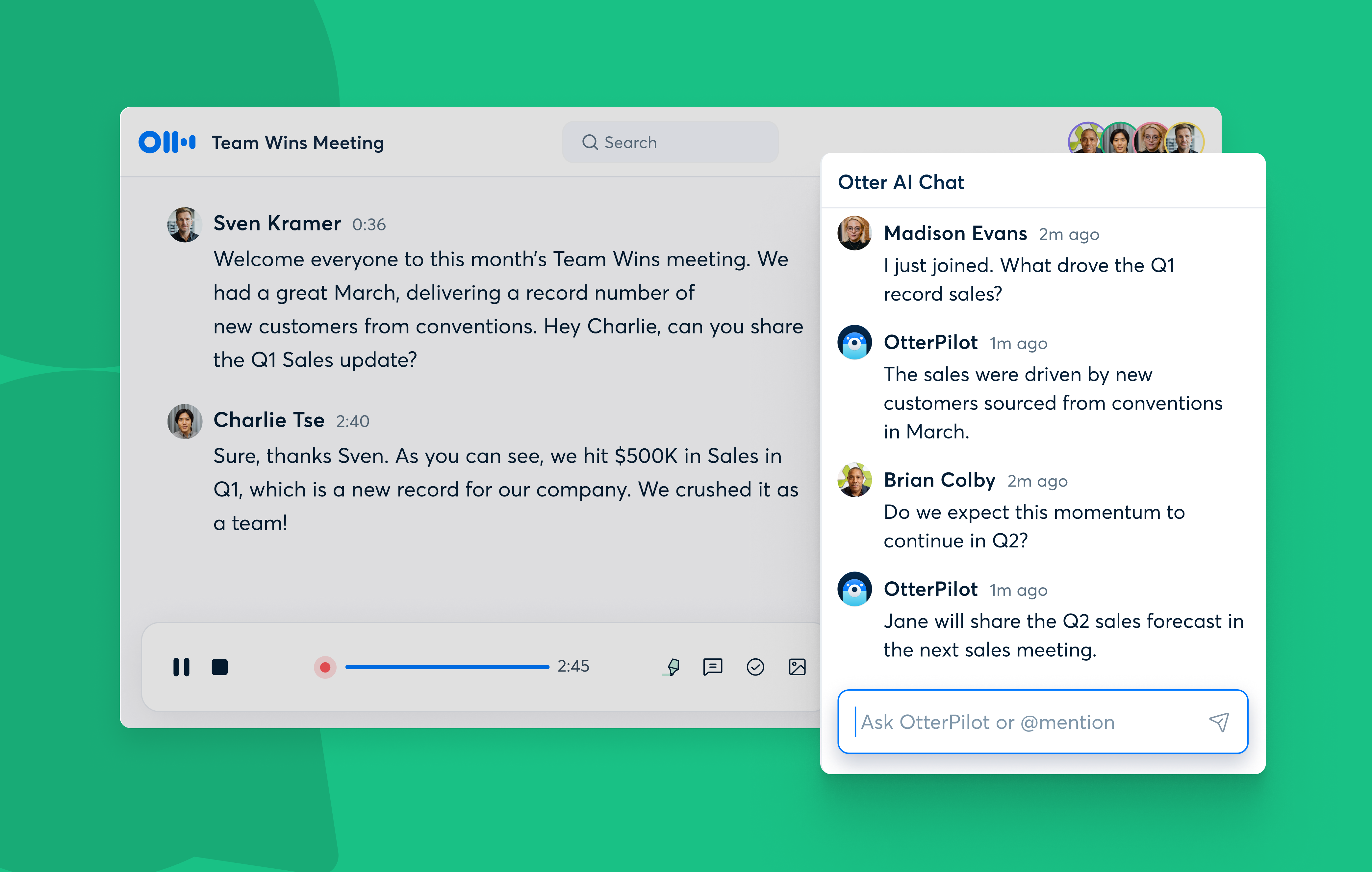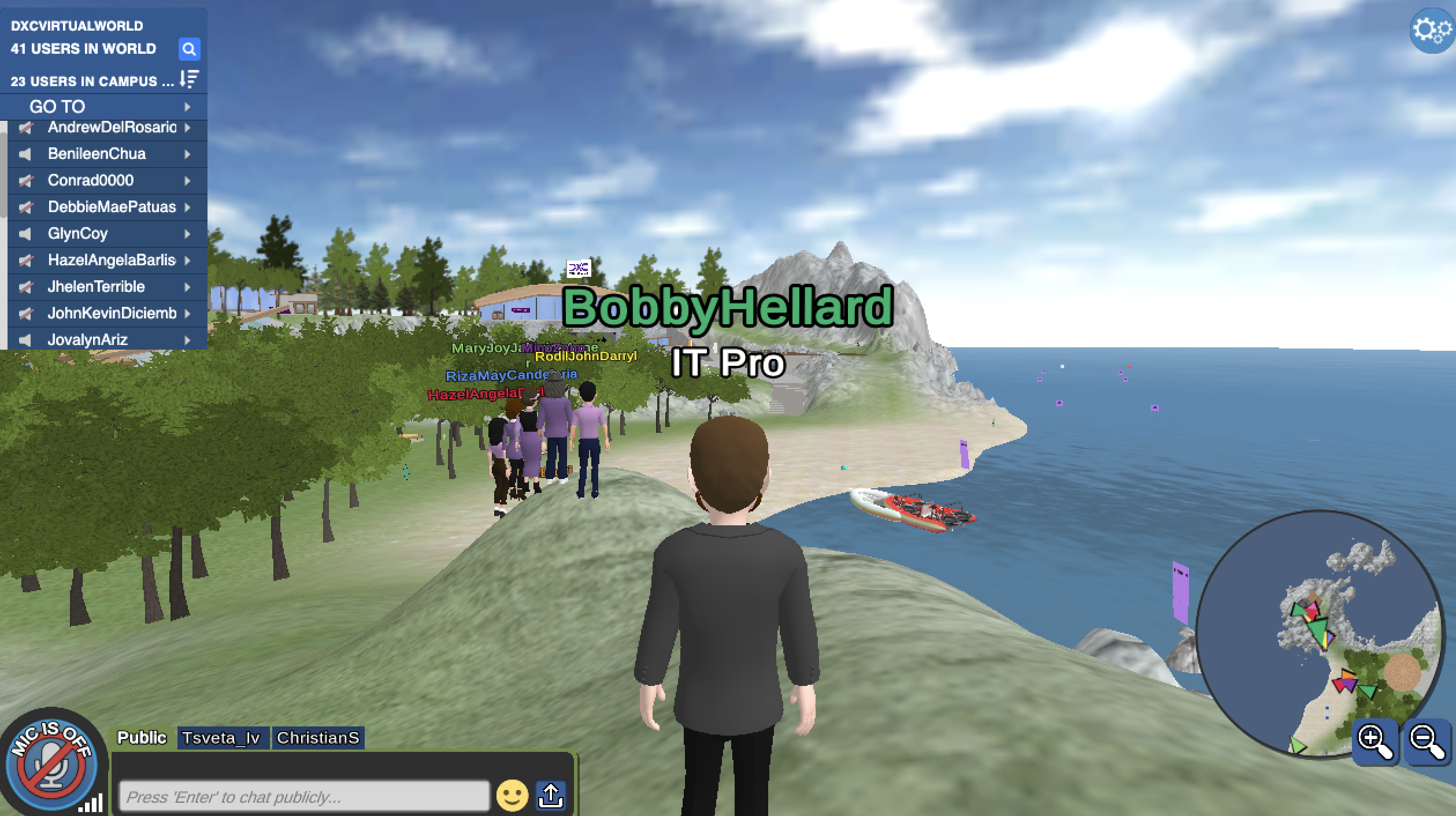Seven steps to keeping metaverse meetings safe and secure
There are practical measures you can take to keep virtual meetings productive, safe and ethical as your team embraces VR-powered spaces

The trouble with emerging technologies is that, while they may open up exciting possibilities, it’s often hard to see what on Earth you can use them for today. The metaverse is a great example: it has real practical potential, but Mark Zuckerberg makes it sound like sci-fi.
With the rise of the metaverse comes the importance of metaverse security, and adjusting to this rather novel trend. I’m not here to offer yet another explanation of what the metaverse is all about. Instead, I want to share my own experiences of going live with this technology.
They’re based on six years of experiments, recently culminating in helping a financial institution take its first tentative steps into the metaverse. The company’s goal was to facilitate stronger collaboration among remote team members, while cutting travel costs, and hopefully reducing office costs – and no doubt those are things you’d like to achieve too.
1. It’s not “the” metaverse

There’s no single, universal metaverse just yet. What we have is lots of little miniverses. Those might one day join together to form “the” metaverse, but right now some are better than others at different things. Being clear about this is important, because, along with sourcing your headsets, picking your metaverse platform is the very first order of business.
Two popular choices are Spatial and Kazendi, and there are good reasons to like both. However, in our recent rollout we opted for some corporate-expensed Oculus headsets in combination with RecRoom. You might be put off by the perception that RecRoom is mostly aimed at kids, but, to quote one of our execs, “most of the really important business gets done over a round of golf”. In the metaverse, nine holes of virtual golf can be squeezed into just an hour, and it’s much better for your carbon footprint than driving to Sunningdale.
RELATED RESOURCE

Learn how you can get an over 200% ROI with Workplace
How Workplace can help your frontline workers
Don’t get locked into one favoured platform, though. Just as you might switch between Linkedin and Twitter, or Zoom and Teams, I’ve found that different people prefer different virtual reality (VR) platforms. As the champion of the technology, you’ll need to be on top of each system’s controls and capabilities, as they’re all different.
Incidentally, don’t anticipate that you can just buy a lot of shared headsets either. One chief technology officer (CTO) told me that she felt a VR headset was a much more personal device than a smartphone, laptop or webcam, and that she wouldn’t be comfortable using one that had been worn by another team member for a few months.
Sign up today and you will receive a free copy of our Future Focus 2025 report - the leading guidance on AI, cybersecurity and other IT challenges as per 700+ senior executives
2. Pick your team

One of my first metaverse experiences came when I spoke at a conference for Daz 3D – one of the visual effects platforms behind Westworld. While some of the technology on show was super-impressive, I was surprised by how detached I found the experience. When you’re interacting in the metaverse with someone you don’t know in real life, it can feel as if they’re a computer game character, even though you know intellectually that the avatar you see is controlled by another real human being.
Ed Blake, CTO at Waverton, later told me he’d felt the same thing: the lack of facial expressions and emotions in current avatars made it a very different experience for him to Zoom. In a video conference you can pick up a huge amount from body language and facial expressions, but in the metaverse you have to pay a lot more attention to the sound of other users to detect how they are feeling and reacting to what you say.
If you’re working with a group of people who don’t all know one another, therefore, it’s best to start with a non-VR ice-breaker session. While you want to keep things professional, a party-game approach can help: the more that your group feels like they know each other in the real world, the better they’ll be able to communicate and work together online.
3. Activities and familiarisation

Once you’ve chosen your early adopter group, you need to get them through their first experience in the metaverse. Start by creating an environment where people are free to explore how VR works: set them some tasks, and give them time to figure out the controls and discover what they can do.
Don’t rush this. People often need a while to get accustomed to the fact that everyone has god-like powers in a metaverse. I’ve seen otherwise productive sessions be spoiled when people are tempted to try out abilities such as creating, throwing and resizing objects in the middle of a meeting.
While your initial orientation session may be fun, make clear that it has a serious purpose. I’ve battled with senior stakeholders who couldn’t get past the idea that VR is only for games, because they weren’t presented with a plan at the outset.
4. Get serious

For your first proper meeting, lay down some ground rules. Treat it like a real meeting, with no larking about and no playing with avatars. Try to anticipate “how do I do this?” requests – we all know how irritating it is when people can’t find the Mute button in a Teams call.
Keep the first session short; 20 minutes is plenty while you’re trying to get your team up to speed with the technology and its capabilities. an interactive PowerPoint presentation, for example, in the virtual space might be the perfect introduction. Let me emphasise that VR isn’t the right medium for a PowerPoint presentation, in the same way that a telephone call isn’t the right way to give a software demo. But most of us have experienced PowerPoint presentations in the real world, so it’s a familiar basis for your first meeting.
In time, you’ll want to move your metaverse experiences towards whiteboarding sessions or other collaboration experiences. If your business is in the manufacturing or industrial industries then you have a huge set of potential metaverse applications, and big potential business cases to build on. For white-collar industries such as banking, don’t get seduced by the novelty of VR: focus on the real business benefits.
5. Keep it serious

Before long you’ll hopefully have a small group of six to eight colleagues who are high performers for metaverse collaboration experiences. But how do you maintain momentum?
The first important aspect is to ensure your VR meetings are productive. VR experiences can quickly descend into playtime: to avoid this, plan out the content ahead of time. Like all meetings, metaverse experiences should have a clear agenda with set timings, and they should stick to the subject.
Recognise too that the metaverse isn’t the right choice for every type of get-together. VR creates a powerful sense that you’re all occupying the same space, having the sort of shared experience that isn’t possible via a web call. Yet Zoom remains more versatile for larger groups, especially if there is material to present. Regularly check with your team whether they feel meetings have taken place in the appropriate space. Could they have achieved more in person or on another collaboration service? Don’t try to shoehorn a metaverse experience in where it’s not wanted.
Trevor Hunt from Cloud Consultancy Behind Every Cloud says: “As a global team leader I would aim to meet my direct reports at least annually face-to-face – but can you really ‘trust’ someone you’ve not ‘met’ with all your senses engaged?” The best teams switch between media with dexterity, adding layers to their interactions as and when they are needed. Finding the balance between the metaverse, videoconferencing, phone and real-life experiences will be a shared challenge as the technology moves forward.
6. Insist on etiquette

The norms of acceptable behaviour in real-world society have evolved over thousands of years. Most of us pick up the conventions as children, and later through social and work experiences, often without even realising it.
Those rules don’t fully fit in the metaverse. In fact, there are no universal rules: we’re very much in an emergent phase, with ideas of acceptable and productive behaviour still developing. However, it’s already clear that some rules are needed. The particular etiquette for your company culture will likely differ from mine, but it must be understood from the start that the virtual space isn’t a free-for-all where anything goes.
It's equally important to manage crosstalk between the real world and the metaverse. Meeting participants need a place that’s safe and free from distractions: when your brain is in a virtual space, background noise from the outside world can be very disorientating. Book a meeting room if you’re in the office, and don’t wear your Oculus in a setting where you’re likely to be interrupted.
If possible, it’s good practice to stream the headset view to a screen or TV, so those who aren’t inside the meeting can see that there’s a serious meeting going on. This is an important part of spreading the word that the metaverse is a real business tool, and not a toy or a science-fiction fantasy.
Set rules for non-VR participants too. Never touch someone with a headset on, and if you have to interrupt them then approach from the front, speak their name loudly and get confirmation that they have heard you before continuing. I made the mistake of not setting this ground rule early on in my own office-based VR experiences – once you’ve been startled by someone else, you’ll really appreciate why this is such a no-no.
Lastly, set a threshold of acceptability with any avatar designs. I prefer life-like, warts-and-all representations, but there’s a whole conversation to be had about body image concerns and the metaverse. That’s beyond the scope of this article, but try to anticipate any concerns your users may have, and head them off ahead of time.
7. Keep it ethical

Moving into the metaverse may throw up ethical questions, such as issues concerning access and online behaviour. These can be addressed via a three-step process. First, identify your stakeholder groups; second, collect feedback on your activities from them; and third, integrate that feedback into your product design, while communicating your stance on specific concerns your stakeholders have raised.
Helpfully, this is also how environmental sustainability, social justice and corporate governance (ESG) issues should be managed – so in many organisations the discipline is already well developed. You just need to talk to the professionals responsible for these functions and incorporate their approach into your metaverse initiative.
What might this look like in practice? Well, I suspect in the vast majority of cases, your stakeholders will be your business colleagues. However, an immediate division is likely to arise between those chosen as early adopters and those left out: these are two different groups that each need to be represented. You might also want to consider stakeholder groups representing diverse samples of your team. I find five or six groups a good number to try to manage, but there really isn’t an upper-limit.
Next you need to develop a feedback mechanism. This might simply mean running a focus group, and inviting colleagues to raise any concerns – but pay regard not only to what is said, but what is left unsaid. For example, we’ve heard reports of women privately finding VR experiences intimidating due to other users’ inappropriate behaviour. HR professionals are often experienced at reading between the lines – you might want to co-opt a colleague from this department to help out with your focus groups.
RELATED RESOURCE

Adding value to Microsoft Teams beyond voice connectivity
How AudioCodes can understand your broader business communication needs and fill in the gaps
Finally, you need to integrate this feedback into your metaverse project, and report back to your stakeholders on what you are doing. You may want to get a group together to collectively decide what the appropriate response should be: in a more formal environment, this might be called your “digital ethics committee”.
Also see what solutions can be discovered from your wider community. One example I came across was a black user raising a concern that a VR training exercise was set around a virtual campfire in a night-time setting, and she felt her skin-coloured avatar made her invisible to other users. All stakeholder groups agreed that an easy change could be made to accommodate this concern: we updated our rules to communicate that metaverse experiences should be created in spaces of natural daylight or equivalent. In every step, what we chose was clearly communicated, and new feedback gathered.
Don’t overlook the importance of the communication aspect. Stakeholder groups may disagree, but I’ve found that a majority decision will always be accepted as long as it’s clearly explained, along with the conditions under which it will be reviewed.
-
 Effective Data and Cleo expand partnership to drive supply chain integration capabilities
Effective Data and Cleo expand partnership to drive supply chain integration capabilitiesNews The agreement will deepen collaboration between the Cleo Integration Cloud (CIC) and Effective Data’s data integration expertise
-
 AI adoption is finally driving ROI for B2B teams in the UK and EU
AI adoption is finally driving ROI for B2B teams in the UK and EUNews Early AI adopters across the UK and EU are transforming their response processes, with many finding first-year ROI success
-
 Big Tech AI alliance has ‘almost zero’ chance of achieving goals, expert says
Big Tech AI alliance has ‘almost zero’ chance of achieving goals, expert saysNews Companies like Microsoft, Google, and OpenAI all have competing objectives and approaches to openness, making true private-sector collaboration a serious challenge
-
 Otter.ai brings collaborative AI to meetings with Otter AI Chat
Otter.ai brings collaborative AI to meetings with Otter AI ChatNews The speech-to-text giant has set its sights on contextual AI
-
 Slack says automation can save every employee a month of work per year
Slack says automation can save every employee a month of work per yearNews Research from Slack found that workers believe generative AI tools will revolutionize productivity
-
 Generative AI has left the metaverse in the dust
Generative AI has left the metaverse in the dustOpinion Generative AI demonstrating tonnes of business use cases only serves to highlight the hopelessness of the metaverse
-
 Meta's earnings are 'cause for concern' and 2023 looks even bleaker
Meta's earnings are 'cause for concern' and 2023 looks even bleakerAnalysis Calls for investor faith in metaverse tech only emphasise the worries that its investment strategy won't pay off
-
 Into the metaverse: Everything we learned from our virtual tour
Into the metaverse: Everything we learned from our virtual tourOpinion Constant distractions – and not much collaboration – make it hard to see the business use cases
-
 Why Honest Burgers is proud to ditch email
Why Honest Burgers is proud to ditch emailCase Studies Employees have embraced Workplace from Meta, allowing the restaurant chain to streamline comms and build chatbots for training
-
 Wi-Fi 7 and XR to set the agenda at MWC 2022
Wi-Fi 7 and XR to set the agenda at MWC 2022Opinion The return of MWC makes for a welcome break from covering international events from the kitchen table